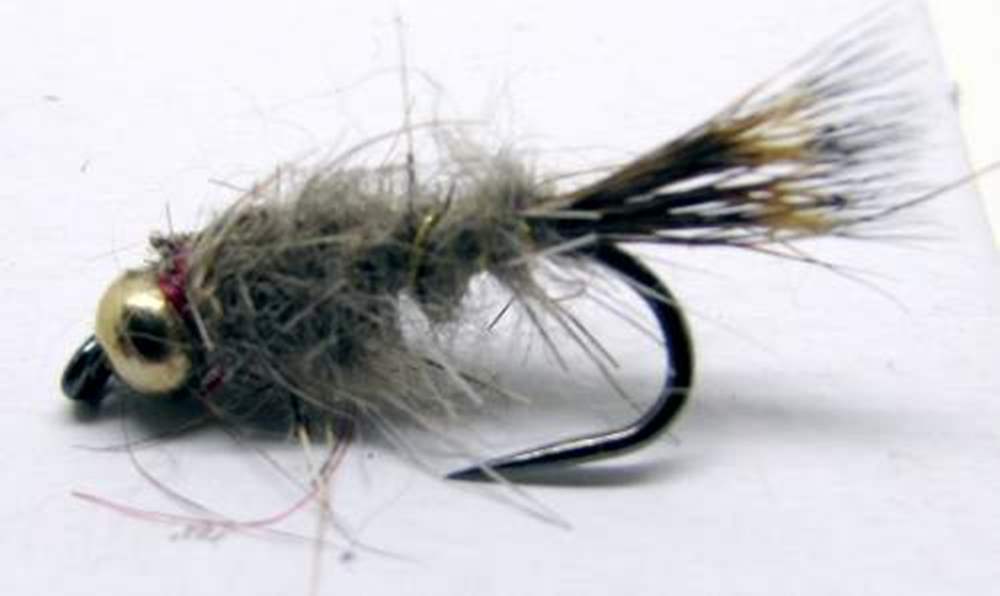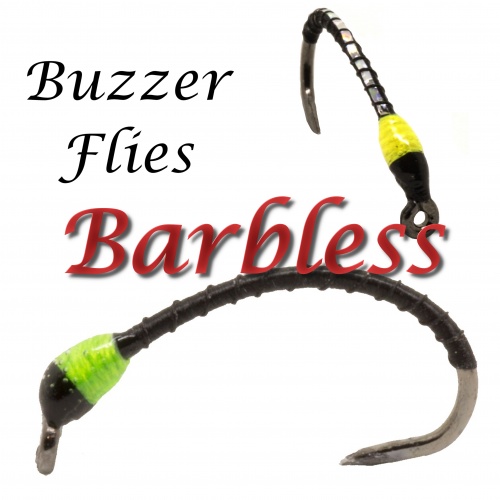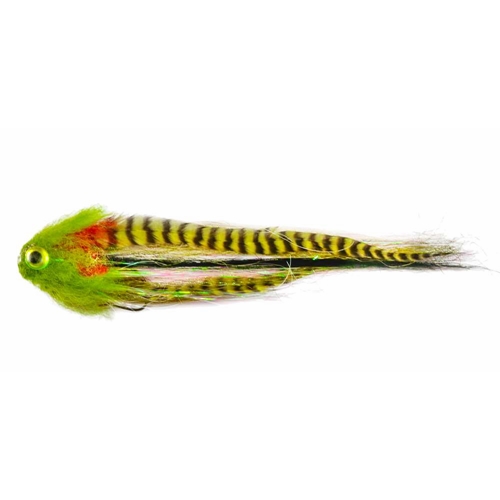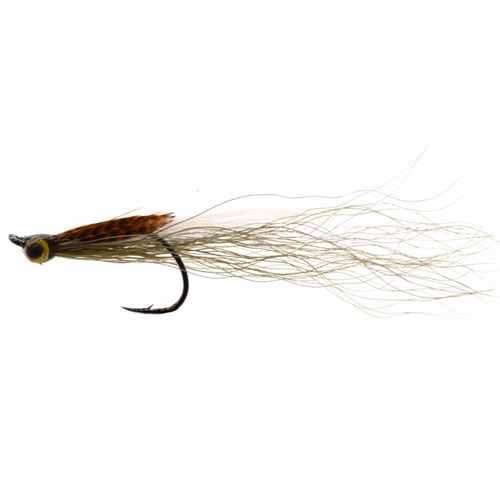Hare's Ear and Hare's Ear Flashback
 Perhaps The Hare's Ear nymph often called by its initials GRHE is a very old pattern and has certainly been around for over two centuries. it is attributed to the Victorian tyer James Ogden. Traditionally, to give it it's bug like appearance, the pattern used fur from a hare's ear, mingling the longer guard hairs with the lighter colored under fur and dubbing for a body. Rabbit fur is easier to obtain and now more widely used. The mayfly nymph can be imitated quite well with a large gold ribbed Hare's ear. It can be fished either weighted or un-weighted. If greased, it floats and provides an excellent imitation of large, hatching mayflies and caddis fly pupae. The most common method of fishing this popular fly is on a dead drift. The nymph is cast upstream and allowed to drift with the current. This is a most effective short-range technique and takes are usually seen as a splash at the surface. The Gold Ribbed Hare's Ear has proven it's effectiveness in lakes. The hare’s ear nymph will attract fish even when there is no hatch on. The Hare's ear is a nymph that imitates almost any natural nymph. I would suggest you try it in runs and riffles, or fish it in still waters.
Perhaps The Hare's Ear nymph often called by its initials GRHE is a very old pattern and has certainly been around for over two centuries. it is attributed to the Victorian tyer James Ogden. Traditionally, to give it it's bug like appearance, the pattern used fur from a hare's ear, mingling the longer guard hairs with the lighter colored under fur and dubbing for a body. Rabbit fur is easier to obtain and now more widely used. The mayfly nymph can be imitated quite well with a large gold ribbed Hare's ear. It can be fished either weighted or un-weighted. If greased, it floats and provides an excellent imitation of large, hatching mayflies and caddis fly pupae. The most common method of fishing this popular fly is on a dead drift. The nymph is cast upstream and allowed to drift with the current. This is a most effective short-range technique and takes are usually seen as a splash at the surface. The Gold Ribbed Hare's Ear has proven it's effectiveness in lakes. The hare’s ear nymph will attract fish even when there is no hatch on. The Hare's ear is a nymph that imitates almost any natural nymph. I would suggest you try it in runs and riffles, or fish it in still waters.
Stripping this nymph back toward you on a lake or pond can get trout on the rod. It is a must for every fly box. The Bead Headed varieties are brilliant. We find stripping these hits fish regularly. The gold bead head attracts the trout with the Hare's Ear as the main "bait". A deadly fly for the fly fisherman.
Tactics With Gold Ribbed Hares Ears (GRHE)
The texture and colour lend of the GRHE (gold ribbed hare's ear) allow them to be fished in two different ways, either imitating the hatching insect near the surface of fished low down in the water imitating a bug, scud or shrimp. Near the surface the texture could be viewed by a fish as a pupa in the process of hatching, breaking its exoskeleton and the residual nymphal skin being discarded. Using lightweight GRHE on long tapered leaders with a floating liine in the surface is ideal for lakes and reservoirs. On rivers use heavier GRHE or beadhead GRHE flies upstream and dead drift lower in the water where it can be taken as a shrimp, scud or other bottom dwelling feast for trout!
Check out our different GRHE Fly Patterns
Available in Fly Size(s) Available in Fly Size(s) Available in Fly Size(s) Available in Fly Size(s) Available in Fly Size(s) Available in Fly Size(s) Available in Fly Size(s)
10, 12, 14, 16.
10, 12, 14, 16.
10, 12, 14, 16.
10, 12, 14, 16.
10, 12, 14, 16.
10, 12, 14.
10, 12, 14.



























